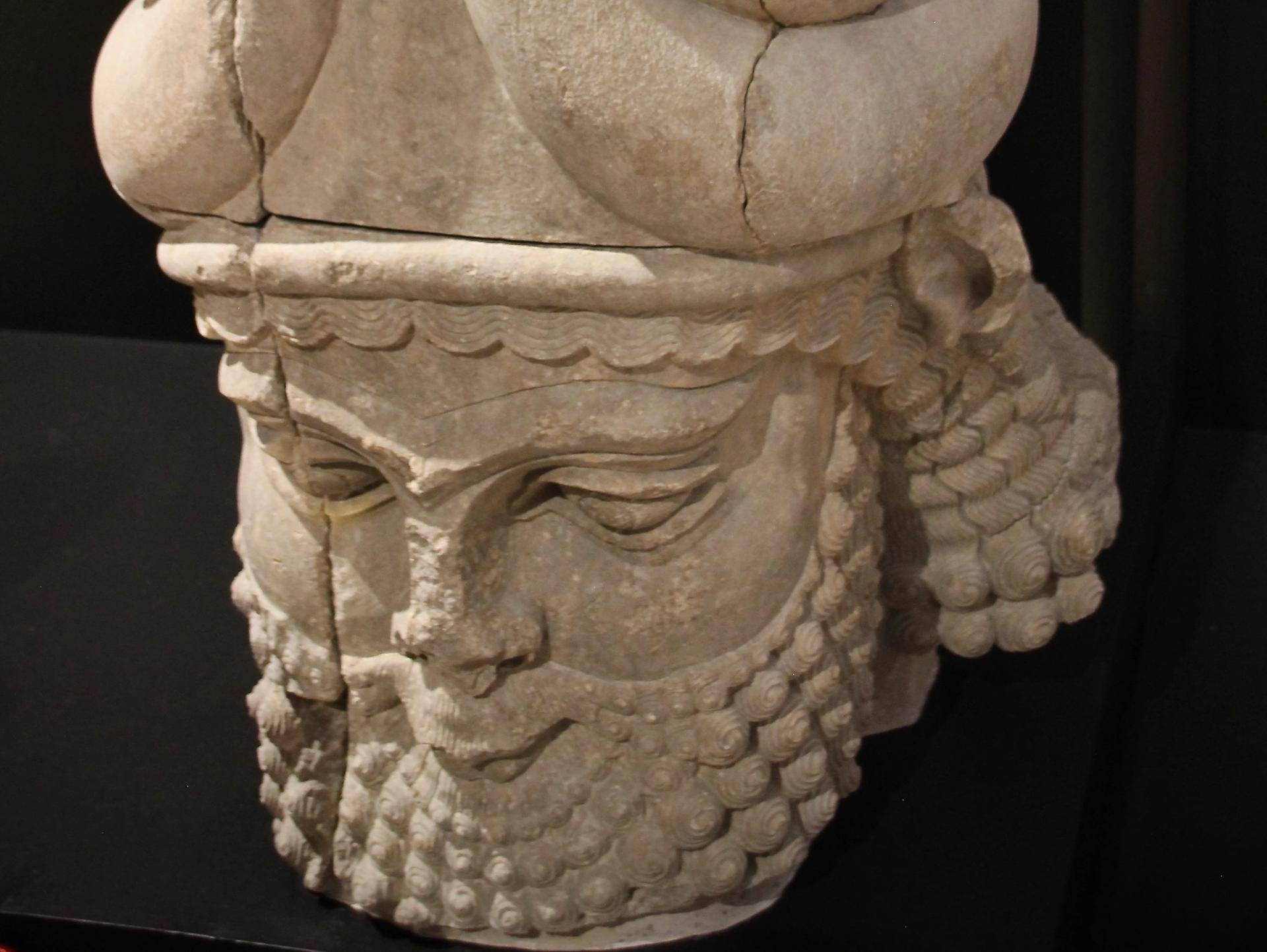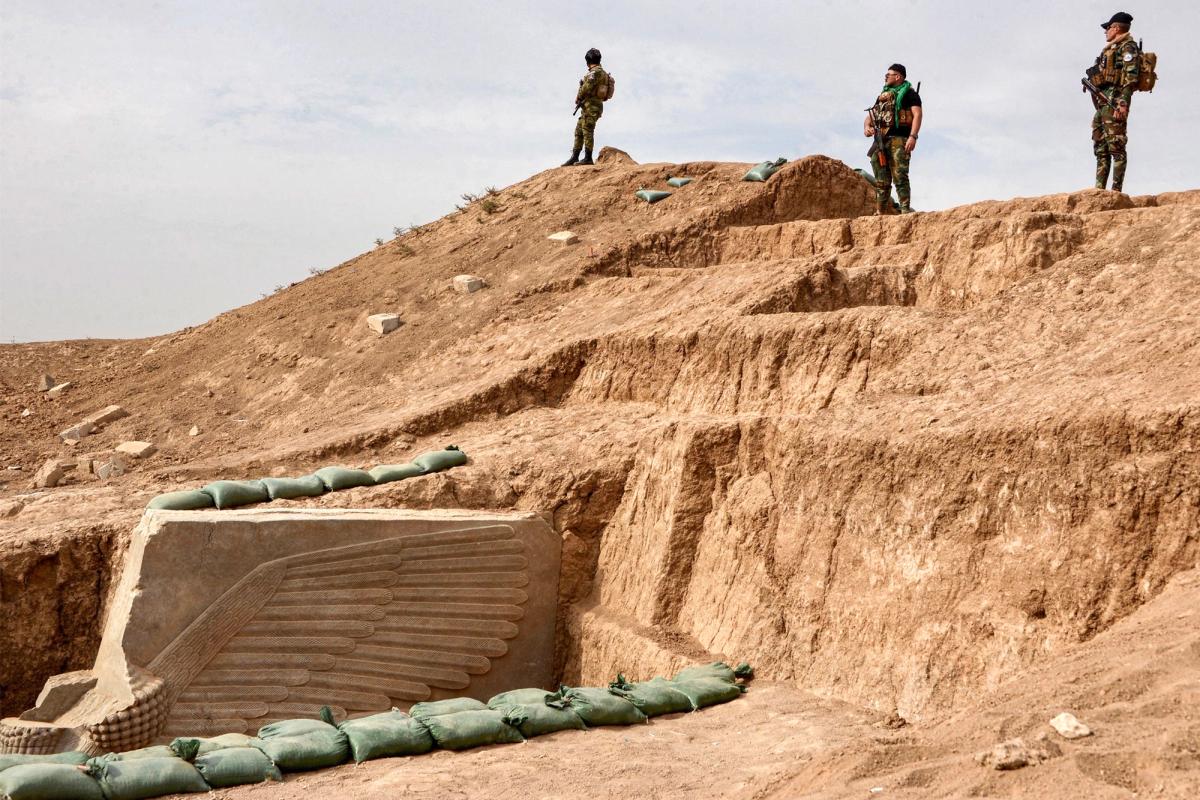A re-excavation of an Assyrian lamassu at the site of the ancient city of Khursbad in northern Iraq has caused a flurry of excitement in archaeological circles.
In a press release yesterday, the Iraqi State Board of Antiquities and Heritage (SBAH) announced that the 2,700-year-old lamassu—an Assyrian protective deity typically possessing a human-like head, a body resembling that of a bull or lion, and wings like a bird—was relatively intact despite its substantial dimensions. The 18-tonne alabaster sculpture measures 3.8m by 3.9m (around 12.5ft by 12.8ft).
The sculpture was re-excavated by a joint Iraqi-French team led by Dr Ahmed Fakak Al-Badrani. In an interview with France24, the French lead archaeologist Pascal Butterlin—the professor of Middle East archaeology at the University of Paris I Pantheon-Sorbonne—said, “I've never unearthed anything this big in my life before. “Normally, it's only in Egypt or Cambodia that you find pieces this big.”
“The attention to detail is unbelievable,” he added.
But the larger story of the Lamassu is as layered as Iraqi history—both ancient and contemporary.
The statue was commissioned for Khursbad, which was constructed by Assyrian King Sargon II as a new capital after he ascended the throne in 721BC. However following his death his son Sennacherib moved the capital to Nineveh, abandoning Khursbad. The site was rediscovered by French archaelogist Paul Emile Botta in 1842.
According to the SBAH release, the lamassu was first unearthed in 1992, two years after an economically crippling UN embargo was imposed on Iraq following Saddam Hussein’s invasion of Kuwait. It was found during excavations undertaken by an Iraqi archaeological mission at Khursbad's sixth gate, on the western side of the site.
As sanctions eroded the Iraqi state, antiquities thefts increased, and in 1995, the head of the statue was broken from the body and stolen by thieves. It was recovered and restored by authorities and currently sits in the Iraqi Museum in Baghdad, with cracks from its dismemberment still visible. The rest of the statue was reburied for its protection and left due to lack of funding and post-invasion turmoil. This situation saved it from the fate of the many similar objects once housed at Mosul Museum, which were destroyed in an attack by the so-called Islamic State (Isis) in 2015.

The head of the lamassu was stolen in 1995, before later being recovered and placed in the Iraqi Museum in Baghdad
Courtesy Hadani Ditmars
Meanwhile, at the Iraqi Museum another layer to the story is revealed. A detailed panel displayed next to the lamassu explains that in 1995 the thieves sawed the head into 11 pieces and tried to smuggle it out of the country.
“They were trying to smuggle the pieces into Turkey on the black market but they were captured,” museum guide Lio Ibrahim says. Their punishment, he says, was execution.
The lamassu also survived the US-led invasion of Iraq, when many archaelogical sites in the country were looted or damaged.
SBAH director Laith Hussein told The Art Newspaper that the French team will assess ways to rejoin the fractured head to the torso, the latter whose neck was damaged when thieves cut it in 1995. But it is not yet clear if the re-united sculpture parts will end up at the Mosul Museum—still not officially re-opened after the 2015 assault—or the Iraqi Museum in Baghdad.
For the moment the lamassu is heavily guarded on site and protected from the elements while the logistical and other challenges posed by relocating such a large, heavy sculpture are assessed.
Ibrahim is delighted at the prospect of the two statue parts being reunited and hopes the newly re-excavated torso will eventually find its way to the Iraqi Museum.
“Now when I tell the story to visitors they don’t quite believe it,” he says. “But if the two parts come together, it will be more real.”


